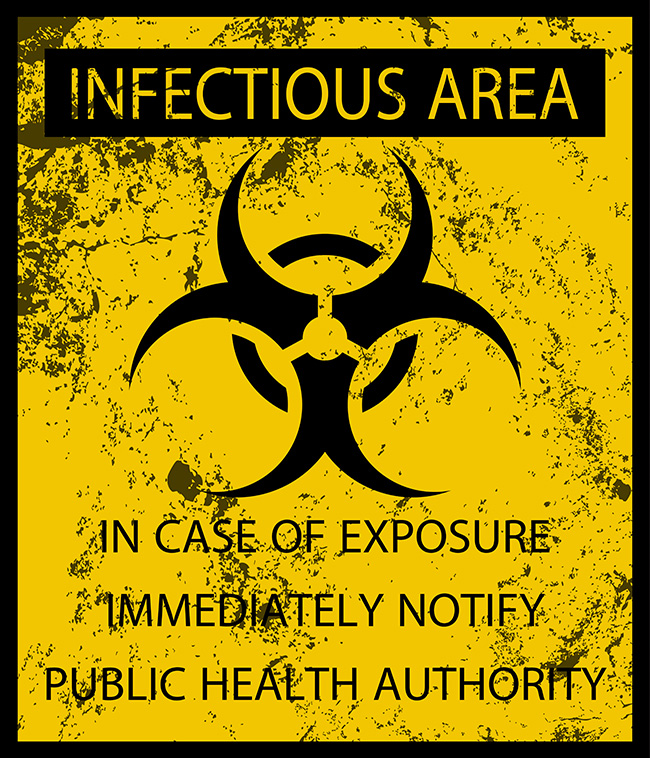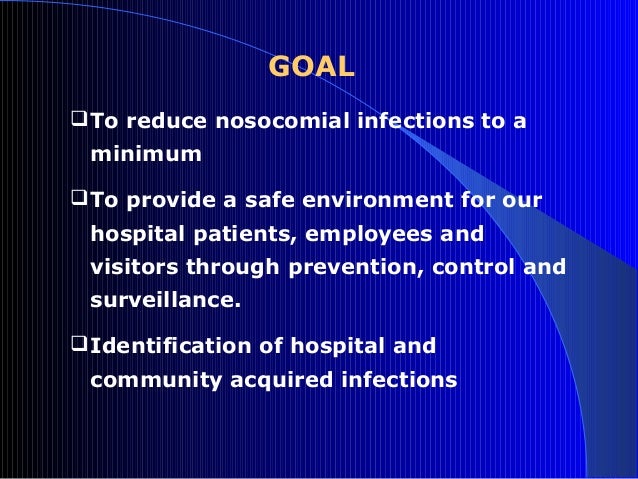Who Infection Control Programs
×. Search. ►. Channels ►.
The infection control objectives of a personnel health service should be part of the hospital's general programs for infection control.
►. Other Channels ►. ►. Becker's Healthcare Websites ►. ►. Print Issues ►.
►. E-Weeklies ►. ►. Infection Control ►. ►.
Conferences ►. ►. Webinars ►. ►. Whitepapers ►. ►.

Who Infection Control Program
Multimedia ►. ►. Lists ►. ►. About Us ►. ►. Most Read ►.
►. Top 40 Articles ►. Hospital infection control programs can help healthcare organizations monitor and improve practices, identify risks and proactively establish policies to prevent the spread of infections. Judith Goldstein, MD, chief of infectious diseases at South Nassau Communities Hospital in Oceanside, N.Y., shares eight steps to effective hospital infection control programs. Educate staff. Effective infection control requires continual staff education on correct practices and the organization's infection control policies. For example, all staff need to be taught the importance and appropriate technique of hand hygiene.
In addition, medical staff should be educated about appropriate antibiotic use. 'Teach staff how to use antibiotics prudently and not to overuse antibiotics. Try to eliminate unnecessary antibiotic use so that you don't continually provide an environment where resistant bacteria could emerge,' Dr. Goldstein says.
Hospitals should educate staff during orientation and throughout the year as needed, such as when new policies are instituted. As part of infection control education at South Nassau Communities Hospital, employees take a quiz to ensure their understanding of best practices. Create a multidisciplinary team. A hospital's infection control committee should be a multidisciplinary group. Goldstein notes that committee personnel should include the hospital epidemiologist, infection preventionists, a microbiologist and representatives from the main hospital departments. IT and secretarial support are also essential. 'Creating a multidisciplinary team also enables hospitals to develop sub-committees or special task forces to solve a specific problem,' Dr.
Goldstein says. Collect data. Data collection is the initial step in the surveillance function performed by infection preventionists. It is important to establish baseline rates for surgical site and bloodstream infections, ventilator associated pneumonia, urinary tract infections and others as needs arise. 'One way of doing surveillance of infections is targeted surveillance — choosing certain areas where there could be a high risk of healthcare-associated infections,' Dr. Goldstein says. The team should also work with the microbiology lab to determine the facility's endogenous bacteria and to identify antibiotic susceptibilities and resistance patterns — including multiple drug-resistant bacteria.
Analyze the data. The next step is to analyze the data for trends and risks. South Nassau Communities Hospital's Infection Control committee meets nine times a year to formally review data reports, but the infection preventionists review data daily to check for unusual trends or clusters of infection. For example, Dr. Goldstein says if an increase in bloodstream infections is noted, they would immediately analyze the data in detail to identify any potential causes. They would identify the type of cases that had bloodstream infections, the time period, the area of the hospital where the infections were reported, the physicians and other staff members who managed the case and any other factors that could correlate with the infection.
Communicate the data. The infection control department needs to communicate surveillance data to staff to ensure awareness of any issues. Data is communicated by several methods at South Nassau Communities Hospital.
After the infection control committee meetings, the department representatives communicate the data they learned to their respective staff members. Written minutes of the meetings are disseminated to committee members as well as to the medical board of the hospital. In addition, the infection preventionists make daily rounds on the hospital units and communicate any important or new information to staff at that time. Lectures and emails are also used to keep the staff up-to-date.
Develop action plans. When the team identifies an increase in infections or risks of increased infections through data analysis, members meet to develop action plans. 'Hospitals have to maintain vigilance for problems and develop action plans as problems arise,' Dr. Goldstein says. For example, in the case of bloodstream infections, the hospital may choose to start using silver-coated central IV catheters, create a central line insertion kit and ascertain that procedures for IV placement are standardized.
Analysis of data collected through surveillance therefore enables the hospital to improve practice and procedures. 'It also results in increased consciousness of what we're doing,' Dr. Goldstein says. 'By raising consciousness, practice gets better.' Additional activities of the infection control department.
Such activities include monitoring hand hygiene, monitoring sterilization and disinfection practices/sterilizer function, monitoring negative pressure rooms and performing infection control risk analyses for all hospital construction projects. Stay up-to-date on policies and news. Goldstein recommends that infection control staff be continually aware of news and updates from organizations such as CDC, The Society for Healthcare Epidemiology of America, the Association for Professionals in Infection Control and Epidemiology, the Infectious Diseases Society of America, as well as state and local health departments. One must stay connected and be aware of infections in the community or nationwide that could enter the hospital. Goldstein says one of the biggest challenges is ensuring infection control as patients move between different care settings. 'It's hard to prevent entry of resistant bacteria where the system is such that there is a lot of patient movement from one medical setting to another,' she says.
Communication with neighboring medical facilities can help prevent the spread of infections. 'If there is an outbreak at a nearby nursing home, for instance, the hospital needs to be aware and take steps to protect the hospital from infection,' Dr. Goldstein says. Another challenge is the emergence of new infections over the last 10-15 years. For example, the recent epidemic of H1N1 influenza virus, and severe acute respiratory syndrome before that forced hospitals to develop new policies and procedures with little data or experience to rely on.

Goldstein says hospitals should monitor new developments in infection control and update policies as needed using evidence-based guidelines from infection control organizations. In summary, effective hospital infection control involves ongoing processes of infection surveillance, data collection and analysis, data reporting, implementation of policies and action plans, education and constant vigilance. Related Articles on Infection Control: © Copyright ASC COMMUNICATIONS 2018.
Interested in LINKING to or REPRINTING this content? View our policies.
Infection Prevention and Control Infection prevention and control is required to prevent the transmission of communicable diseases in all health care settings. Infection prevention and control demands a basic understanding of the epidemiology of diseases; risk factors that increase patient susceptibility to infection; and the practices, procedures and treatments that may result in infections. The risk of acquiring a healthcare-associated infection is related to the mode of transmission of the infectious agent (e.g., etc.), the type of patient-care activity or procedure being performed and the underlying patient’s host defenses. Healthcare workers should be vaccinated against preventable diseases such as hepatitis B. Personnel at risk for exposure to tuberculosis should be screened per recommendations.
Who Infection Control Program
Guidelines and recommendations related to infection prevention. HAIs are currently one of the top ten leading causes of death in the United States. Healthcare professionals have an important role in HAI prevention. HAIs are infections that patients acquire while receiving treatment for medical or surgical conditions. HAIs occur in all settings of care and are associated with a variety of causes. Infection control precautions are a set of standard recommendations used to reduce the risk of transmission of infectious agents from body fluids or environmental surfaces that contain infectious agents.
The National Healthcare Safety Network (NHSN) is a secure, internet-based surveillance system managed by the Centers for Disease Control and Prevention. NHSN is open to a variety of health care facilities in the United States. PPE is specialized clothing or equipment worn to protect against infectious organisms. The purpose of this program is to ensure that all employees required to wear respiratory protection as a condition of their employment are protected from respiratory hazards through the proper use of respirators. Infection prevention resources for public safety personnel (fire and police) that may come into contact with persons who are known or suspected to have communicable infectious diseases.
Infection Prevention and Control and Healthcare-Associated Infections News and Alerts. Stop the spread of germs that make you and others sick: Cover Your Cough. Proper hand hygiene may eliminate nearly half of all cases of foodborne illness and significantly reduce the spread of the common cold and flu.
Injection safety, or safe injection practices, refers to the measures taken to perform injections in the safest manner possible for patients, health care providers, and others. The ICAR program provides Healthcare-Associated Infection (HAI) evaluation to Minnesota health care facilities. We can provide health care facilities with the tools and guidance needed to help everyone work together to prevent HAIs. Information about antimicrobial use and resistance. Spotlight.
Information about washing/cleaning your hands. Injection safety, or safe injection practices, refers to the measures taken to perform injections in the safest manner possible for patients, health care providers, and others. Posters that you can use to help teach people to cover their cough.
These materials do not include the parts about being asked to wear a mask. This poster is available for download in ten languages.
Posters to be posted in clinics and hospitals asking ill people not to visit. ICAR provides health care facilities with the tools and guidance needed to help everyone work together to prevent HAIs.
If you have questions or comments about this page, use our or call 651-201-5414 for the MDH.